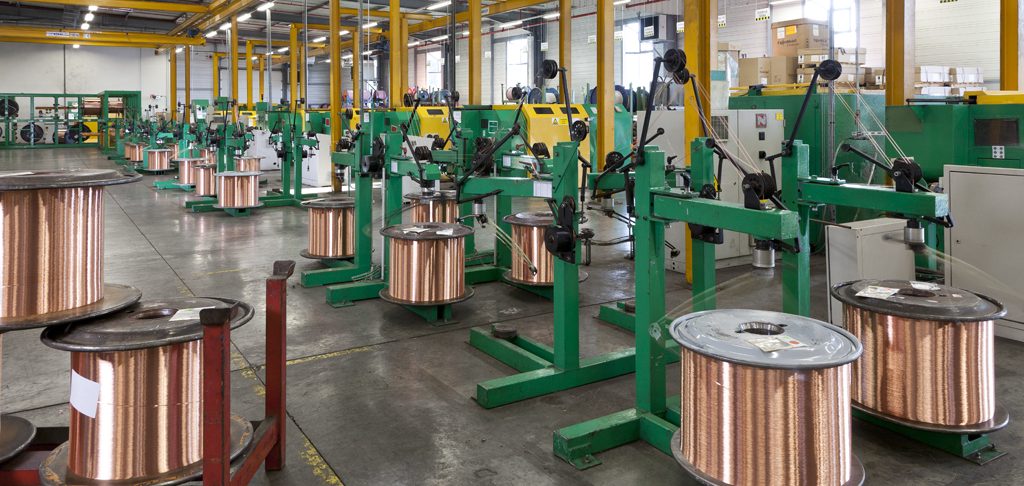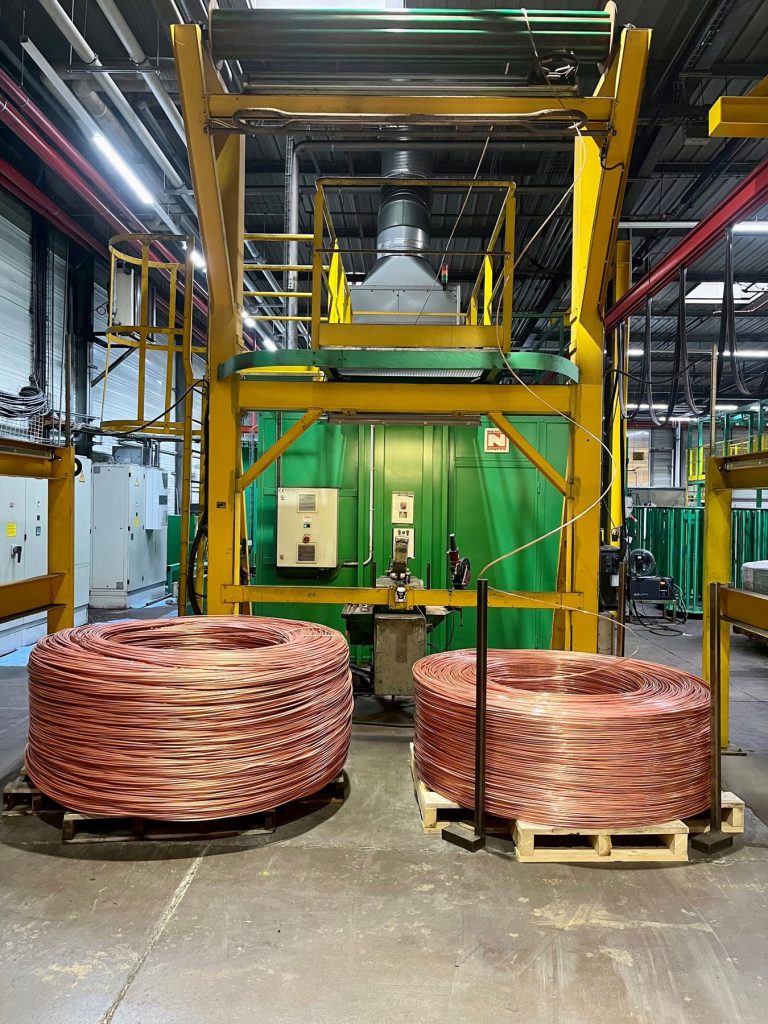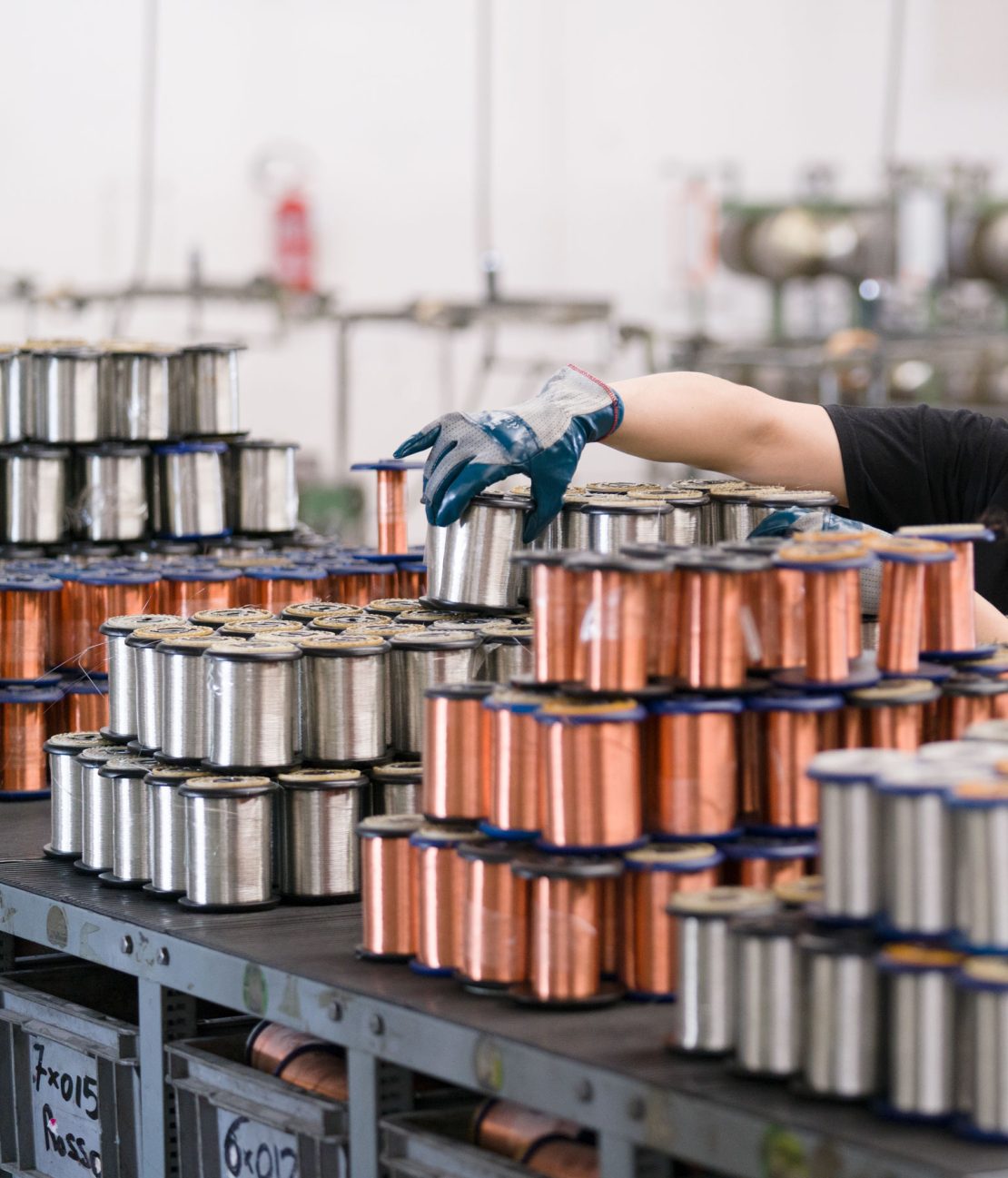
The analysis carried out until now have shown that we must focus on our products to reduce the CO2 emissions. Here the greatest portion of CO2 is bound. The raw material copper plays an important role in this.
LAPP has set itself the goal of ensuring that all major product groups have a product carbon footprint. : Internal investigations have shown that copper accounts for on average approximately 60 percent of the product carbon footprint in LAPP cable products. Reducing the share of emissions caused by copper will take us closer to our common saving target.
Currently it is impossible to dispense with copper as a raw material, as no other material has comparable characteristics. The red metal is the second-best conductor of electricity after silver and has a significantly better conductivity as aluminum. In addition, copper is more resistant to heat, durable and 100 percent recyclable.

Sustainable copper – is it possible?
Based on the calculations by experts, the overall global warming potential of copper is 4.1 kg CO2e/kg on average (source 1).
The highest proportion of this arises in the early stages of mining, when the ore is extracted and subsequently transported and processed. In addition, in the copper mines worldwide, for example in Chile, Peru, China or the USA, the ore grades are declining and a more complicated process with higher energy input is required for extraction. At the same time, the demand for copper will increase by 60 percent by 2040 due to the massive expansion of renewable energies (source 2).
This development poses a dilemma for us as cable manufacturer. On the one hand we need copper as a raw material, but on the other hand, a large amount of energy is needed to mine copper ore. We at LAPP are responding to this challenge while looking for innovative ways.
Meanwhile there are worldwide initiatives that aim to make the global copper industry more sustainable.
We create transparency
Today, our global production sites are procuring the copper mainly independently. In the future the procurement of copper will be strategically managed. As a first step, we launched the “CUPRUM” project in 2020.
The project’s main objective is to create transparency by making the global supply chains visible. Based on the project results, LAPP will align its purchasing strategy – from a decentralized to a centralized procurement organization. In the process, we will continue to rely on several sources of supply, because the decision of a supplier depends on various factors: Where is the supplier located? How far are the transport routes? In which processing form is the copper available? As it turns out, not all copper is the same.

LAPP takes a proactive approach to the topic of “green copper”
LAPP is currently in talks with copper suppliers to get an overview of the CO2 emissions of the various products. As soon as we have an overview on the current emission values of all copper products we are purchasing, we will check whether a change towards “green copper” will be possible. It is important for us to seek the dialog with our suppliers and work together on common solutions.
Sustainability is an important part of LAPP’s DNA. As a family-owned company, we feel particularly committed to our society and the environment. In this context, the efficient and sustainable use of energy and raw material resources is an important concern.
